Hannah Höch and collage as protest
Collaged fashion images use various techniques to imbue an otherwise ordinary fashion spread with hints of the bizarre. Sometimes mutating contemporary beauties into grotesque figures, sometimes introducing multiples perspectives of clothing or makeup, sometimes simply an exercise in aesthetic pleasure, they remain a popular editorial format. Whenever new technology emerges, collages evolve alongside it, making it feel like a perpetually modern medium. But collages are more than just pretty compositions, they are part of a history of protest. When collages were first introduced as an art form, they were an enormous, controversial departure from established art attitudes. Paintings were viewed as a window into another world, establishing pictorial mimesis as the greatest reflection of reality. That notion of art was challenged in the early 20th century by movements such as Impressionism, Orphism, Cubism, Italian Futurism and many, many more. The fragmentation you see in fashion editorials today are not simply derivatives of paper-cut collages, they harken back to these very movements in Modern Art.
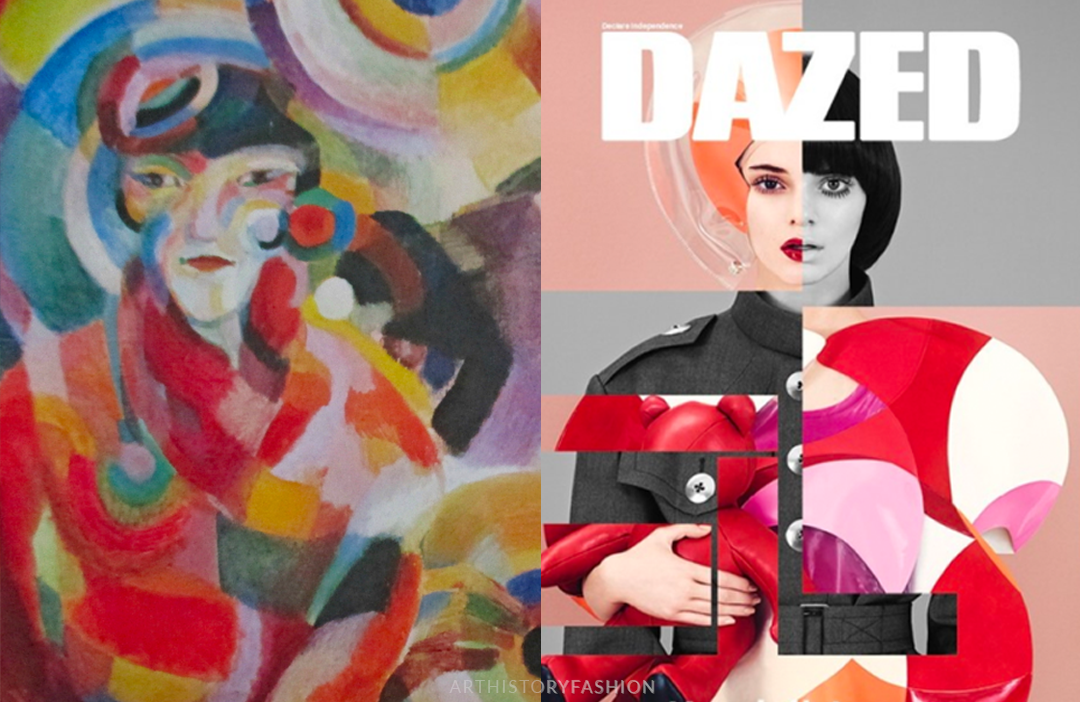
"Flamenco singer" by Sonia Delaunay (1915) vs Kendall Jenner on the cover of Dazed Magazine (2014)
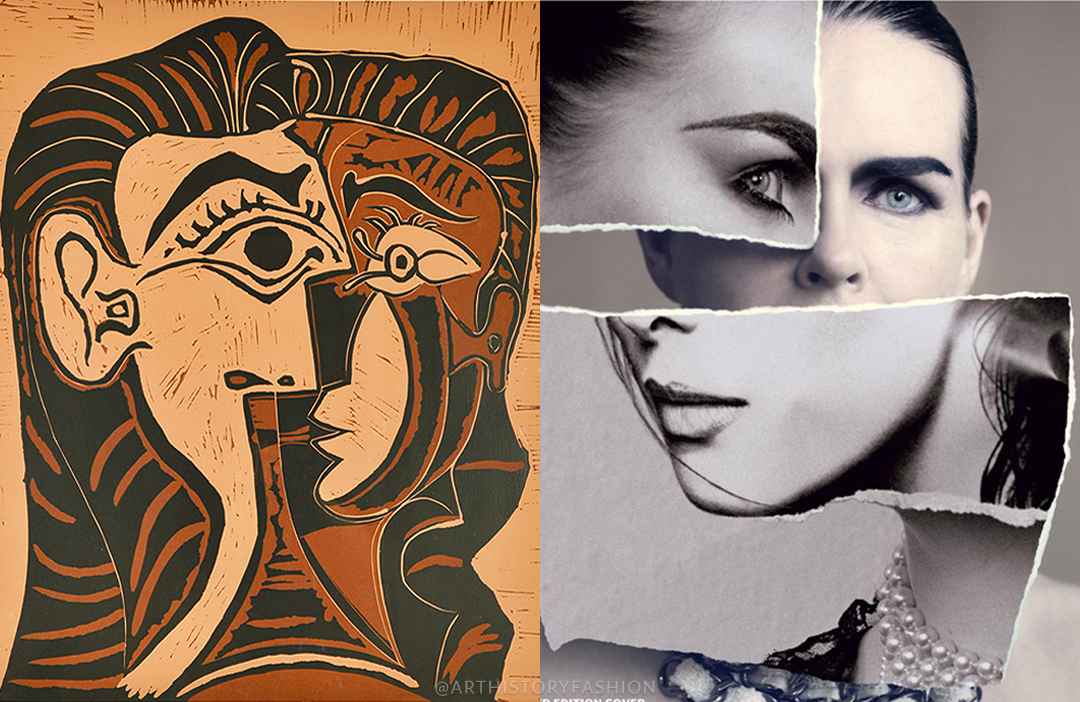
"Tête de Femme (Head of a Woman)" by Pablo Picasso (1962) vs Wallpaper Magazine, photographed by Paolo Roversi (2013)
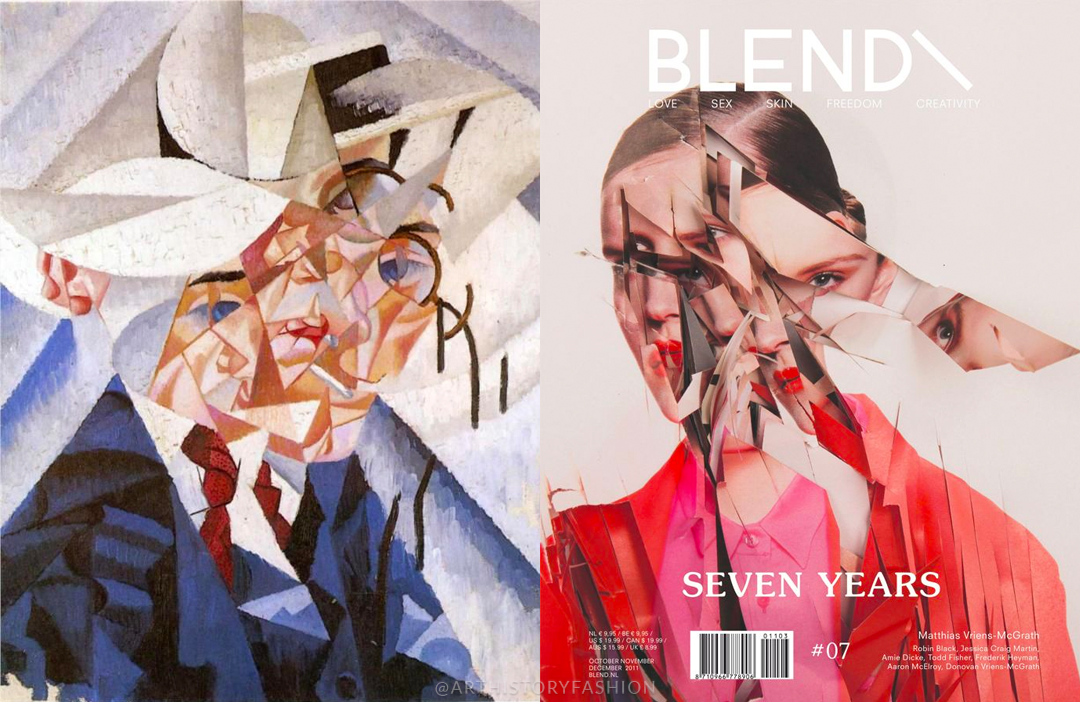
"Self-Portrait" by Gino Severini (1912) vs Blend Magazine (2011)
Collages — also known as papier-collé and photomontage in art history terms — have a long history stretching back to Cubism, with the Dada and Surrealist movements adopting the technique for their own expression and philosophies. While contemporary collages that proliferate Instagram, Pinterest and fashion editorials appear to have strong references to Surrealism or Cubism, I can't help but notice the influence of Hannah Höch in many of these images.
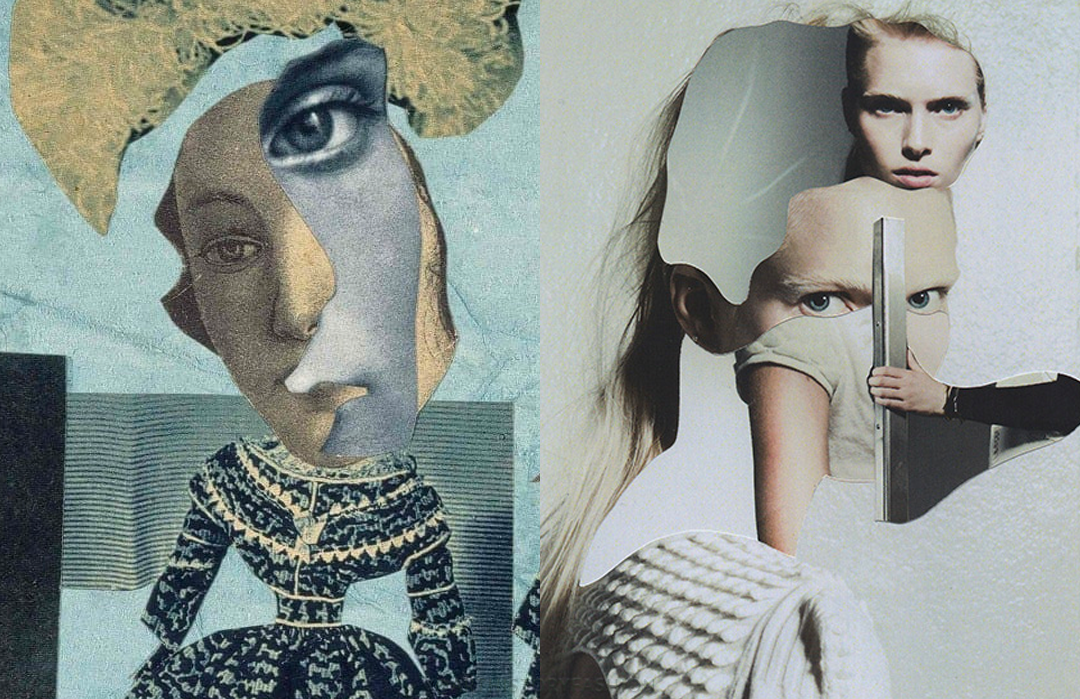
"Modenschau (Fashion Show)" by Hannah Höch (1925-35) vs Jesse Draxler for CREEM Magazine, Issue 9 (2013)
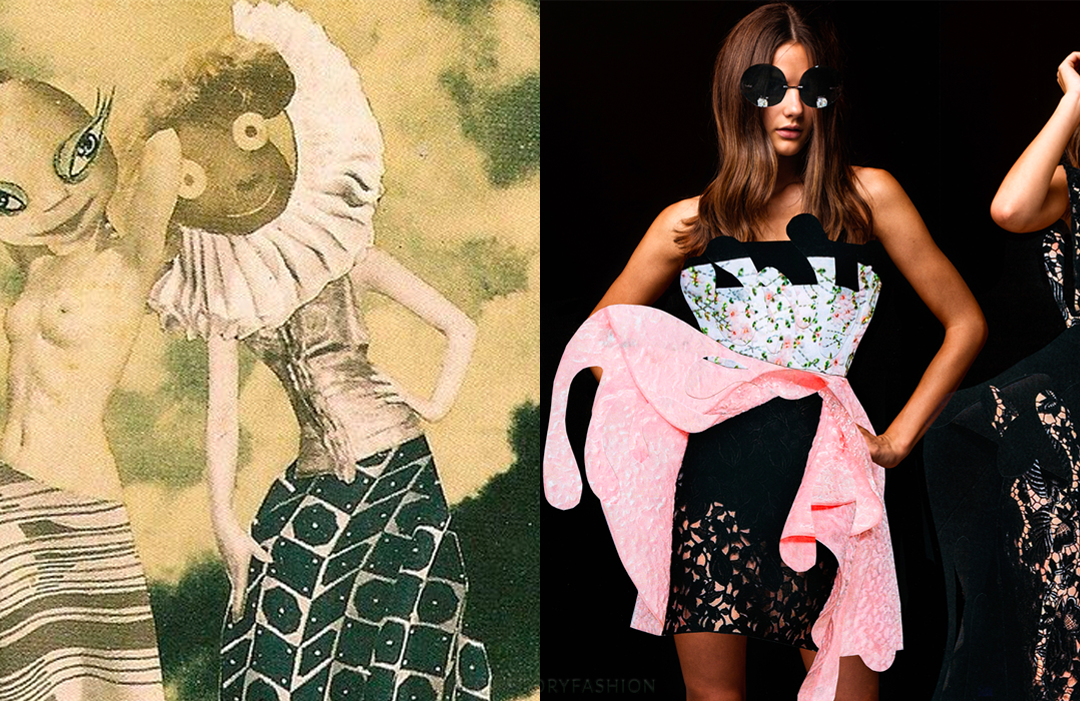
"On the Way to Seventh Heaven" by Hannah Höch (1934) vs Editorial collage with Abby Bass by GL Wood (2015)
Hannah Höch - The feminist voice in Dada
Hannah Höch was a pioneering member of the Berlin chapter of the Dada group, a movement which emerged in the wake of World War I. Dadaism tapped into the trauma of a destabilized Europe reeling from the effects of the war. It was characterized by an irreverence towards formal artistic strategies and the endorsement of the absurd. Disillusioned by the violence, Dadaists sought to challenge the traditional political and social structures that allowed the war to come to fruition. This included “nationalist politics, bourgeois values, communicative functions of language, pious social mores.” ("Looking at Dada" by Sarah Ganz Blythe & Edward Powers)
The Dada movement wasn’t restricted to just the visual mediums, it was incorporated into poetry, musical compositions, literature and theater. Photomontages in particular were a popular technique employed by Dadaists, clipping found images from mass media to create a setting that articulated the instability and anger of the world at the time. Photomontages were a form of revolution and protest.
As one of the few recognized female members of the movement, Höch provided a unique feminist perspective during a distinctly tumultuous time. In particular, much of her work offered a critique on how society viewed and treated women. In 1918, women in Germany earned the right to vote and were increasingly entering the workforce, ushering an era of Weimar Germany’s “New Woman”. However, there were many instances of systemic discrimination, with women being pigeonholed into low-paying, unskilled jobs and political parties refusing to integrate women into their organizations, leaving them powerless in the legislative sphere.
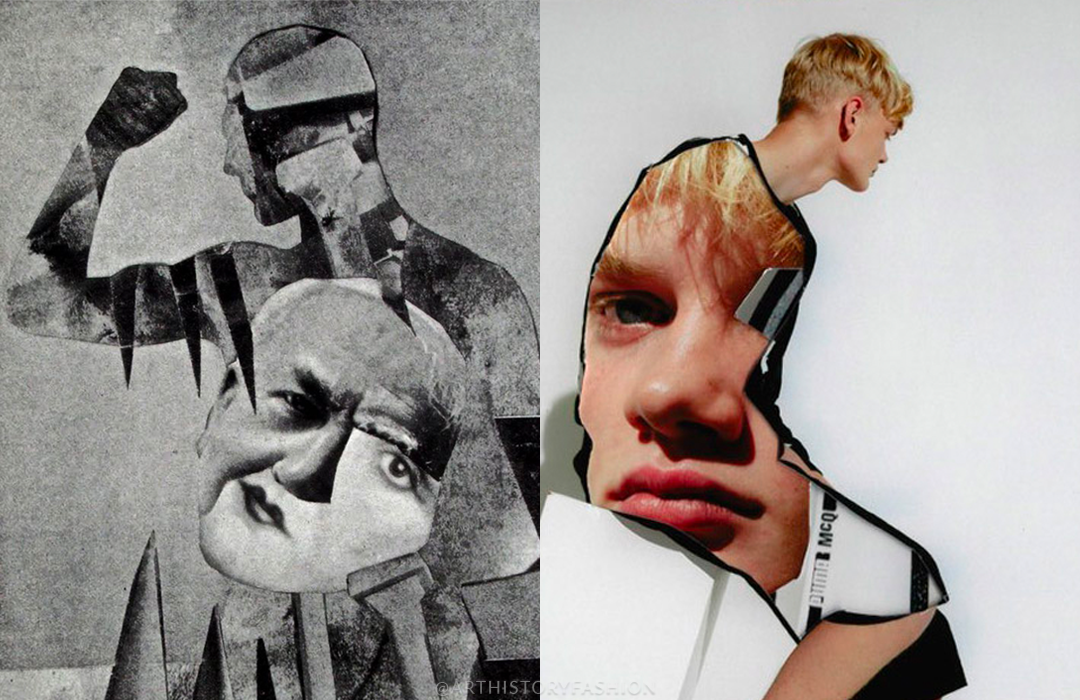
"The Strong Guys" by Hannah Höch (1919) vs PUMA x McQ Spring/Summer Campaign (2016)
In "The Strong Guys", half of a woman’s face is literally trapped in the confines of a male figure, his biceps flexed as an archetypal symbol of masculine athleticism. A jeering male face makes up the other half, with the pair of eyes staring directly at the viewer, giving it a disturbing, confrontational feel. The woman doesn't appear in distress, but rather resigned to her situation. Höch often mixed male and female body parts together, forming an androgynous hybrid of a figure. Nowadays, you see many fashion editorials with faces within the contours of the body.
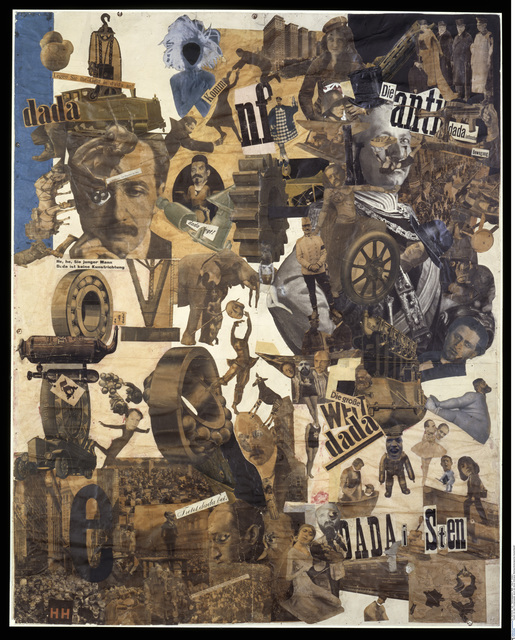
"Cut with the Dada Kitchen Knife through the Last Weimar Beer-Belly Cultural Epoch in Germany” by Hannah Höch (1919)
One of Höch’s most well known works, "Cut with the Dada Kitchen Knife through the Last Weimar Beer-Belly Cultural Epoch in Germany” (1919), celebrates a world in which women are liberated. Dismembered, buoyant women — cut from renown actresses and dancers — twirl across the topsy-turvy space amid images of modern technology. A map of Europe on the lower right hand corner darkens countries in which women were granted suffrage. Fragmented across the page are symbols of science and technological progress (can you spot Albert Einstein?), as well as icons of German militarism. Despite their weightless, carefree dancing, the figures feel claustrophobically trapped by the dizzing components that make up modern life. (To be honest, this complicated work is deserving of far more analysis than what I just provided. It is rich in symbolism and considered one of Höch's masterpieces.)
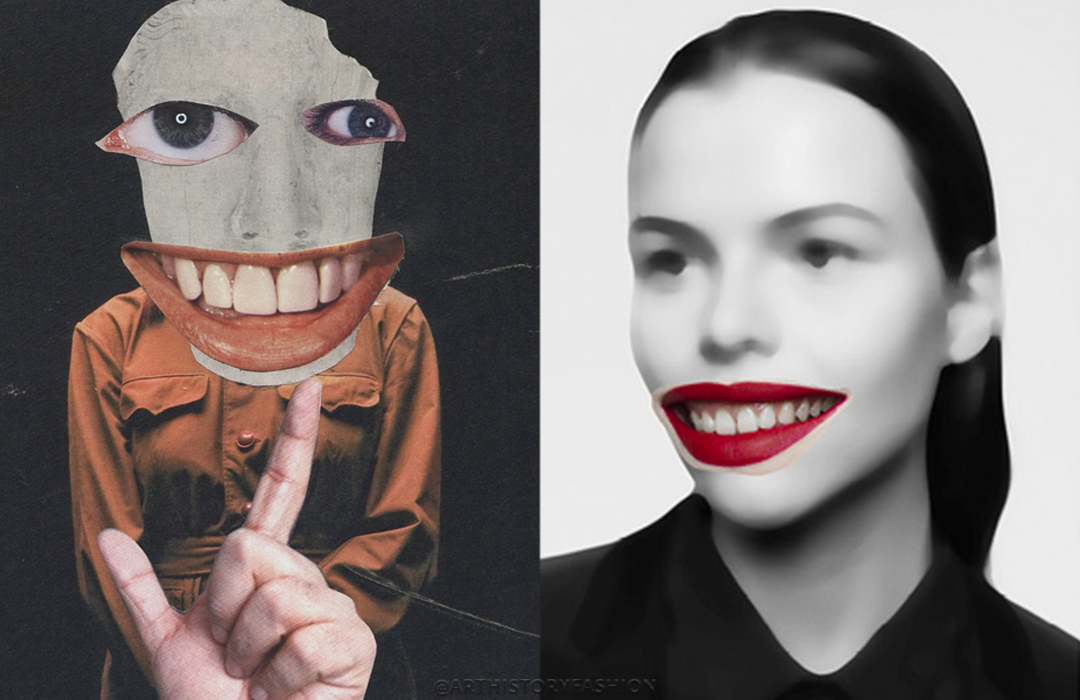
"Untitled" by Hannah Höch (1919) vs "Family", featuring Eline Bocxtaele, photographed by Pierre Debusschere for Exhibition Mag (2018)
In “Untitled”, Höch spliced blue eyes — backwards and cross-eyed — and a Cheshire smile onto a sculpted head, grotesquely over-exaggerating and fracturing classic indicators of femininity. An anonymous hand reaches beneath the woman, holding her chin up, while the woman demurely clasps her hands in front of her. At once, Höch is satirizing the notions of idealized beauty while addressing the woman’s limited power. In “Family”, we see the same emphasis on the sensual red lips, not just through their bizarre enlargement, but also their similarly stark contrast against the model’s grayscale skin. There’s an additional unsettling quality produced by the crisp lips sitting on a very blurred, almost painterly face. I find it quite coincidental that both images feature photographed lips on a decidedly inhuman figure — Höch’s on a statue and Debusschere’s on a deliberately manipulated model.
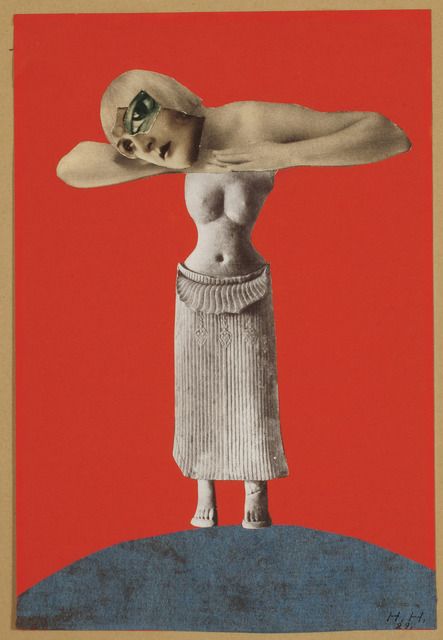
"Ohne Titel (Aus einem ethnographischen Museum)" by Hannah Höch (1930)
Höch also challenged conceptions of racial purity through her art with collages of European women combined with African art and artifacts, a provocation directly in the face of Nazi ideals. She mocked the obsession with Aryan beauty by exaggerating certain features, as seen above in "Untitled". Höch truly heightened photomontage as a political medium though her metaphoric work, injecting a feminist voice in a movement largely dominated by men.
It’s incredibly interesting to me to see how fashion editorials adopt art techniques and philosophies that have long histories seeped in critique and revolution. At this point, those fashion collages are stripped of their ideological undercurrent and are simply a conglomerate of graphic design choices based off the basic visual rules of color theory and balance. One fashion reviewer — who shall remain unnamed — called collages “a new trend”. A trend? Au contraire ma'am, you are off by about 100 years.